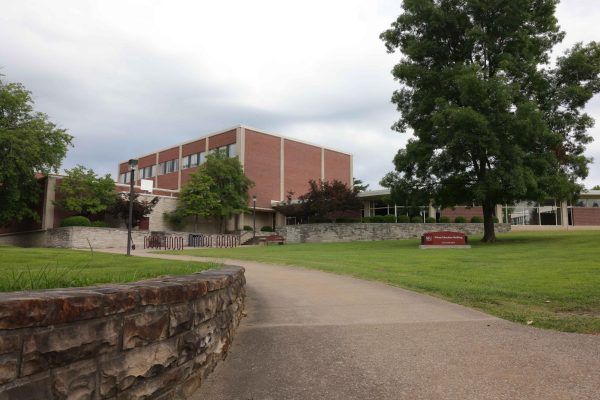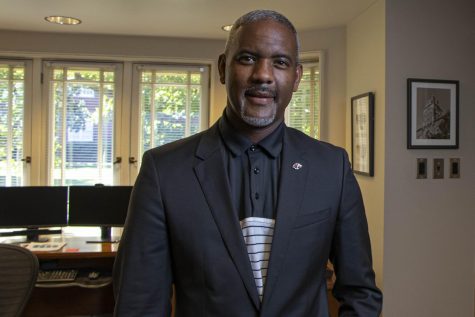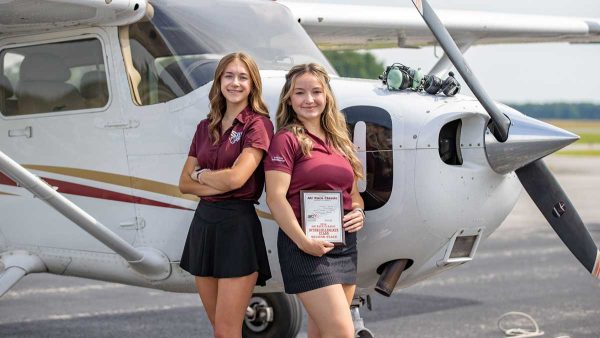ASL storybook “Calvin Can’t Fly” proves magic of reading isn’t limited to words
An adaptation of the childrens’ book “Calvin Can’t Fly: The Story of a Bookworm Birdie” seeks to bring the joys of reading to children who have struggled with conventional literacy.
Sarah Michaelson and Michael Herzovi, a Southern Illinois University Carbondale (SIU) alum, incorporated American Sign Language (ASL) and a variety of media effects to make the story more accessible for children with various disabilities.
“Working with job seekers who were deaf, I witnessed how the lack of reading skills limited employment opportunities for many of the talented candidates I worked with,” Michaelson said.
Advertisement
After retiring, Michaelson volunteered with Open Books, a Chicago non-profit that provides literacy programs, and saw how engaged kids would become from stories. Michaelson saw how they related to the plot and characters even though they struggled with reading the words, she said.
“The battle to understand written English was similar to what I had witnessed as an employment counselor,” Michaelson said.
The original children’s story was written by Michaelson’s cousin Jennifer Berne and published in 2015.
In the book, Calvin, the starling, finds he’s different from the rest of his flock. Calvin prefers to read while the rest of his siblings fly.
When it comes time to migrate, Calvin realizes he can’t fly. His sisters, brothers, and cousins carry him into the air.
On the way south, the flock is beset by a hurricane and Calvin is able to save them because he read about hurricanes in a book.
“[It’s] being true to who you are,” Michaelson said.
Advertisement*
Michaelson was inspired to start the project after hearing Herzovi, her “life partner,” do voiceover for a documentary by Crom Saunders, an associate professor in the American Sign Language (ASL) Department at Columbia College Chicago.
“Michael and Crom had such amazing synchronicity in feeling, pacing, expression and tone,” Michaelson said.
Michaelson met Saunders through Second City, a comedy theater and school in Chicago, where he taught a workshop incorporating American Sign Language (ASL).
“(Crom) made language come alive in a way that I hadn’t experienced before,” Michaelson said.
Michaelson pulled together a team of Chicago artists to work on the project, whose unique skills brought the story to life she said.
“Dianne Lee’s animation added so much life to the story. John Erickson’s music brought delight and emotional resonance. We were so lucky to find Liz Tannebaum, who co-created and performed the ‘ASL Flying Lesson’ that was the second part of our video presentation,” Michaelson said.
Shuling Yong filmed the second part of the video, and Matt Lauterbach edited and provided audio.
“Calvin Can’t Fly is a story about inclusion, told by a group of inclusive artists. Like Calvin’s contribution to his family, everyone gave their best to bring this video to life,” Herzovi said.
Herzovi hopes he is able to raise awareness about people with disabilities living and working in Southern Illinois and everywhere else, he said.
“Usually, when you have a disability, you’re behind the crowd, a minority among minorities. Unfortunately, it’s still very hard to say to the world, `give me a chance,” Herzovi said. “My father always said, ’Where there’s a will there’s a way’.” The Calvin video, and the ones that come after, say, ‘Don’t question what I can do. Here’s what I’ve done’.”
Saunders said representation is vital for individuals with disabilities.
“I have an ongoing online project called Ink-Stained Fingertips, which I began around five or six years ago, translating written poetry into ASL videos to make it more accessible for deaf readers, and then I started branching out into short stories and children’s books,” Saunders said… “This story was fun to do, and I was very pleased with the outcome.”
Calvin Can’t Fly serves as a model for understanding and connection with people who learn differently from others.
“It serves as a bridge to connect people. We are inviting everyone to the table. Everyone belongs,” Michaelson said. “It doesn’t have to be so hard if, like Calvin’s brothers and sisters and cousins, we make the effort to recognize each other and celebrate our differences.”
One of the moments Michaelson loved most from presenting the video happened at a screening at the Arlington Heights Memorial Library.
“The father and mother helped their children to learn the signs as they were presented. The first ASL lesson, taught by Liz Tannebaum on our video, was about ‘Name Sign’s and the audience members were encouraged to identify the sign names for Crom Saunders, for Calvin and for Liz herself,” Michaelson said.
There are different ways of spelling people’s names in the sign language world which is different from spoken English.
“Michael and I watched the little girl, who seemed shy but determined, imitating the sign names with the help of her Dad. At the end of the program, with her father’s encouragement, the little girl walked up to Crom, and signed to him using the name sign she just learned, “Thank you, Crom!” Michaelson said
This interaction demonstrated the universality of sign language and how powerful it can be by crossing borders of identity.
People who are interested in bringing Calvin’s story to their community can request a screening on the website: https://calvinaslstorybook.com/screening-request/
Staff reporter Joel Kottman can be reached at [email protected] and on Twitter: @JoelKottman. To stay up to date with all your Southern Illinois news, follow the Daily Egyptian on Facebook and Twitter.
Advertisement








